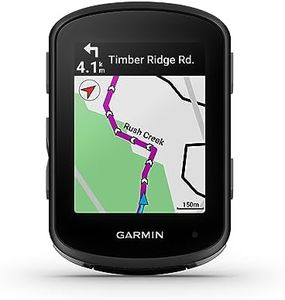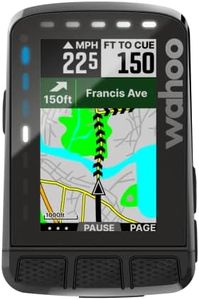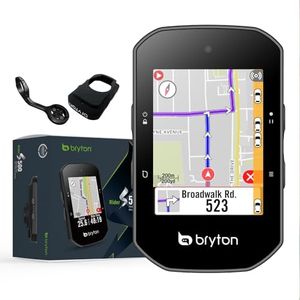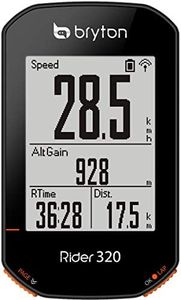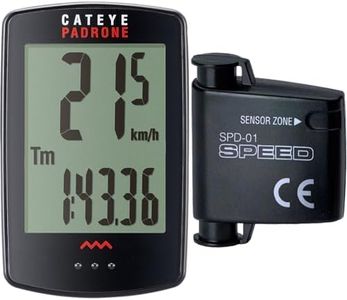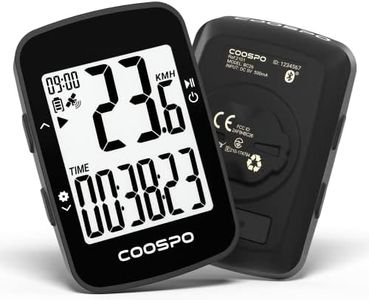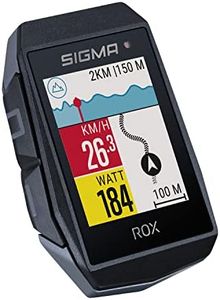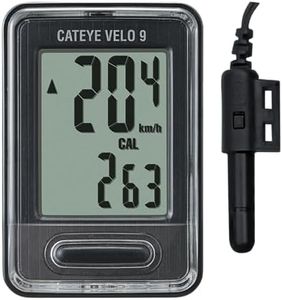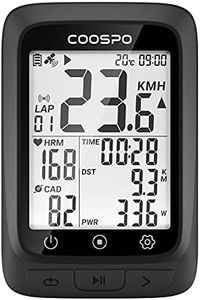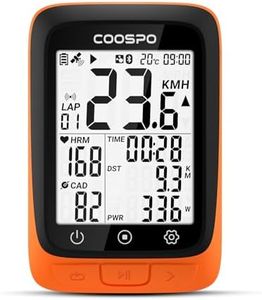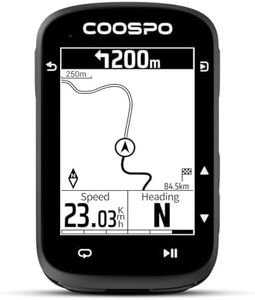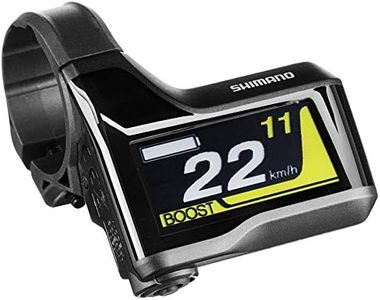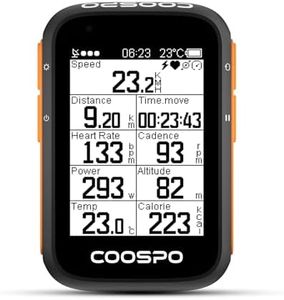We Use CookiesWe use cookies to enhance the security, performance,
functionality and for analytical and promotional activities. By continuing to browse this site you
are agreeing to our privacy policy
10 Best Bike Odometers
From leading brands and best sellers available on the web.Buying Guide for the Best Bike Odometers
Choosing a bike odometer is about finding a device that matches how you ride and what kind of information you want to track during your cycling trips. Odometers for bikes, often called bike computers, can range from very basic models that track your distance to advanced options showing a wealth of data about your rides. The right choice depends on the type of biking you do, the level of detail you want in your riding stats, and how you plan to use the information.Display TypeThe display type refers to how information is shown on the odometer screen. This could be a simple monochrome LCD, a backlit display, or even a color screen on more advanced models. A clear and readable display is important so you can quickly check your stats while riding. Simpler displays are easier to read in direct sunlight and use less battery, making them suitable for recreational riders. Backlit or color displays, while offering richer information and easier nighttime viewing, may require more battery power. When picking a display type, think about when and where you’ll be riding most often—bright daylight, cloudy days, or at night.
Measured MetricsMeasured metrics are the types of data the odometer can track, like speed, distance, trip time, and sometimes even cadence, heart rate, or altitude. Basic models will track essentials like speed and distance. More advanced devices can show extra stats like average speed, max speed, time, and even power output if paired with additional sensors. Pick the odometer that measures what’s most important for you: if you're a casual cyclist, basic stats may be enough; if you're training or interested in performance, look for broader metric support.
Wired vs WirelessThis specification tells you how the odometer gathers information from your bike's wheels and transmits it to the display. Wired models use physical cables between sensors and the main unit, whereas wireless versions use radio signals. Wired odometers are often a bit simpler and less susceptible to interference but require more involved installation. Wireless odometers offer a cleaner look and easier setup but may occasionally suffer from connectivity issues and require batteries in both the sensor and the head unit. Choose wired if you appreciate reliability and don’t mind installing cables, or wireless if you value ease and tidiness.
Mounting OptionsMounting options describe how you attach the device to your bike, typically on the handlebars or stem. Some odometers have fixed mounts, while others offer quick-release or tool-free mounts for easy removal and theft prevention. Being comfortable with where and how the odometer sits on your handlebars is important for both reading data and protecting your odometer from damage. Think about how often you might want to remove or shift it, and pick a mounting that fits both your bike setup and personal convenience.
Battery LifeBattery life indicates how long the odometer can function before you need to recharge or replace the batteries. Basic odometers with simple displays can last months or even years on a single battery, while wireless or feature-rich models generally need frequent charging or more regular battery changes. Consider how often you ride and whether you want the convenience of rarely thinking about the battery or don't mind occasional charging in exchange for added features.
Water ResistanceWater resistance tells you how well the odometer can handle rain or splashes. Since cycling exposes your gear to weather, having at least some water resistance can be vital for durability. Options range from splash-resistant (fine for light rain) to fully waterproof (able to withstand heavy rain and even brief submersion). For most riders, a basic level of water resistance is enough, but if you often cycle in wet climates or through puddles, aim for a device with higher protection.
ConnectivityConnectivity covers features like Bluetooth, ANT+, or USB, which let your odometer communicate with phones, fitness trackers, or computers. This is crucial if you want to upload ride stats, receive notifications, or use external sensors. If you’re mostly tracking rides for personal satisfaction, you may not need advanced connectivity. But if you like sharing data, reviewing your progress, or using cycling apps, check for these options.

